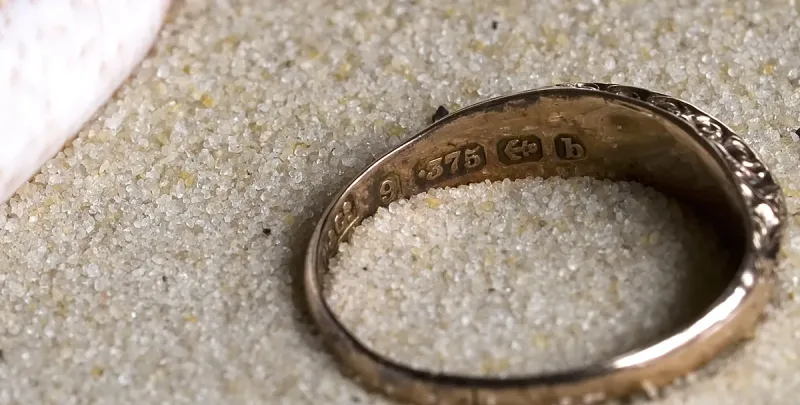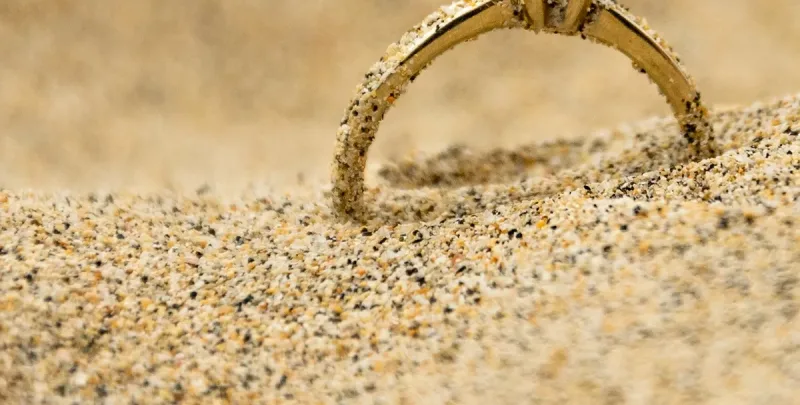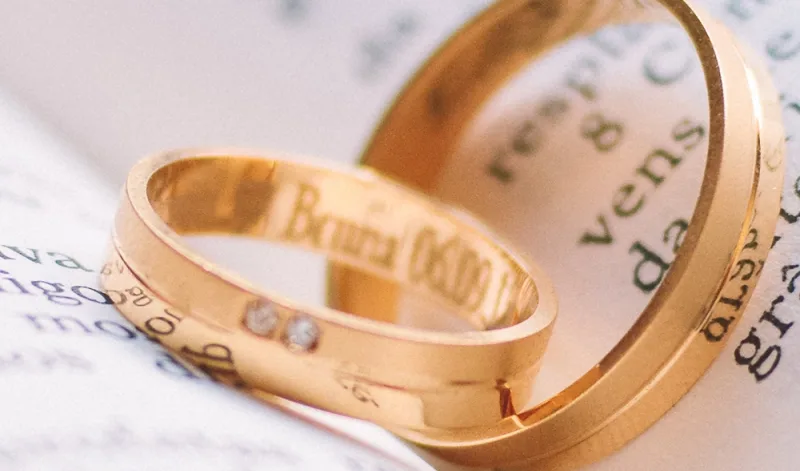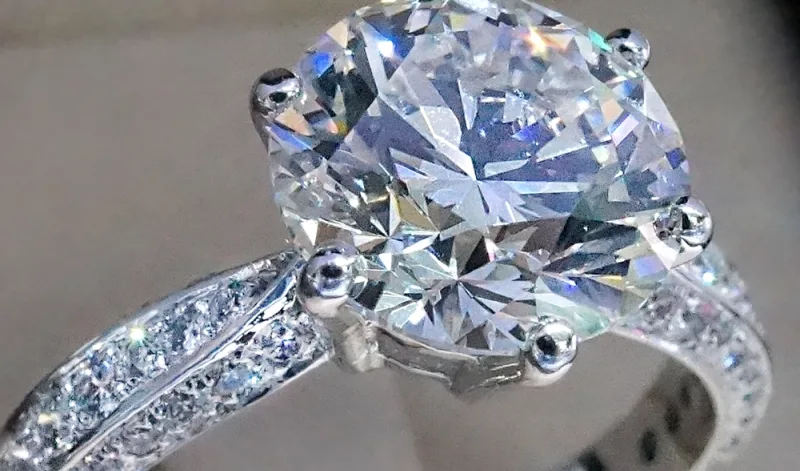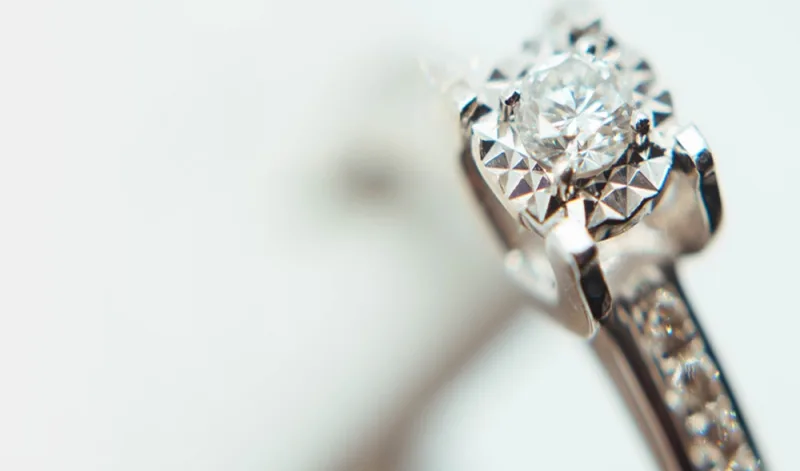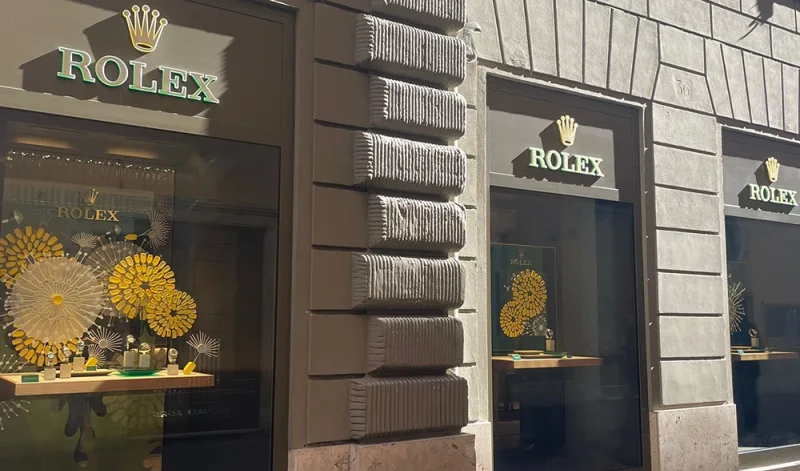The term expensive means different things to different people depending on your own set of personal circumstances. The reality is that most engagement rings are expensive when juxtaposed to the price of other goods that you could buy with similar amounts of money.
In terms of insurance, usually the more expensive an engagement ring, the higher the insurance cost will be.
The raw materials involved in the construction of a ring are usually gold or platinum and a precious stone or stones, usually a diamond. These items are prized mainly due their scarcity and durability.
So what makes one ring more expensive than another?
In terms of the metal ring itself, most jewellers will say there is very little difference between one shape or style and another. A certain weight of precious metal is used and whatever shape it is fashioned in to, has little effect on the actual value.
Metal prices can fluctuate both increasing and decreasing over time; gold, the principal metal employed is seen as a safe haven by investors in times of economic unrest and this can have an effect on the cost of rings as can fluctuations in currency prices.
In some cases, you may obtain a ring by a popular or well know designer and this style will come at a premium.
The biggest driver in making an engagement ring expensive is the stone used in the construction. Normally it is the main stone that makes up the bulk of the value, any additional stones such as shoulder stones, set in or on the engagement ring are usually not of such good quality.
What are the big four main stones used in expensive engagement rings?
When choosing an engagement ring, there are usually four main stones that a person desires to be present.
Diamonds
Diamonds are easily the most popular stone used in engagement rings. When it comes to getting engaged, if given the choice, most people prefer to have a diamond ring. Further, if you ask most people what constitutes an expensive engagement ring, they would say, one with a very large diamond. As diamond rings are expensive, it’s important to ensure you also consider specific diamond ring insurance for such a high value item.
Diamonds are rare, their formation takes millions of years and they have the distinction of being the hardest natural substance found on earth.
Diamonds are graded using the “Four Cs - if you are shopping for an engagement ring you will come across this term often.
The Fours Cs are
CARAT
This refers to the weight of a stone and most people equate size with value and whilst this is generally true, there are other attributes of a stone that can add or detract from its value. Larger stones above 1ct weight are harder to come by and this rarity will add to the value. However, it must be remembered weight or size alone doesn’t necessary make for an expensive engagement ring. All factors of a diamond need to be considered in combination.
CUT
Some say the way a diamond is cut is the most important physical factor, a well-cut diamond will sparkle and have more fire than say a larger diamond which has not been so well cut.
Cutting a diamond is highly skilled job, carried out by craftsmen using precision tools. The craftsman will use his skill to cut the diamond to emphasise its best attributes and to try to hide or remove any imperfections known as “Inclusions”.
There is a scale of diamond cuts ranging from Ideal or near ideal through to poor. The better the cut the better the diamond will shine. A good cut will allow light to more easily enter the stone, be dispersed around the stone and back out in that famous sparkle that your eye can see.
Jewellers will tell you that size isn’t everything, a smaller well cut diamond can actually appear bigger than a poorly cut bigger stone.
COLOUR
Clear or colourless diamonds are still the most prized and completely colourless diamonds are the rarest. The untrained eye may find it difficult to distinguish between colour grades especially those that are close together on the scale. In simple terms the less colour, the more sparkle a diamond will exhibit.
As mentioned, there is a colour grade scale which ranges from D all the way through to Z. Z rated diamonds will have a yellowish colour to them. Normally in the manufacture of jewellery, it is unusual to find a stone below grade J.
CLARITY
Diamonds occur naturally and as such finding a perfectly formed one will be rare. Most will include defects known as inclusions. An inclusion is a defect found within a stone. Defects that are found on the surface of a diamond are known as blemishes.
These flaws are given different names depending on their shape, names include: needle, pinpoint, cloud and, feather. These defects are caused by other substances combining with the diamond during its formation. You can be assured that any diamond you choose will be unique.
There are also grades for clarity ranging from F (Flawless) through to I3 (Included)
An F rated diamond will be very expensive and unless you have the budget for a very expensive engagement ring, better value can be obtained with a diamond with a lower grading. In most cases, a flawless diamond can really only be spotted using a specialist tool, called a jewellers loupe. In some of the lower grades, the inclusions will be difficult to spot and they will of course be unique to your own stone.
There are a number of grading laboratories that will examine and provide a written report on the physical attributes of a diamond.
The other popular stones that may be set into a ring to make an engagement ring are:
Emerald - Emeralds are a very distinctive green colour, which is caused by the stones combination with the elements chromium, vanadium, and iron. The varying degrees of these elements cause differences in colour. Emeralds with a deep green colour are more prized and thus more expensive.
Ruby - This is a stone with a beautiful deep red colour caused by the mineral corundum. Rubies are actually rarer than diamonds, the brightest and most valuable shade of red called blood-red or pigeon blood is highly prized and a prime specimen will be very expensive.
Sapphire - No one can mistake the beautiful blue colour of Sapphires which is also caused by a combination of Chromium and other minerals. Although not as hard as diamonds Sapphires are also known to be one of the hardest naturally occurring substances. Although blue is the colour most associated with Sapphires, they can occur in almost any other colour.
Who sells expensive engagement rings?
There are a number of brands synonymous with high quality expensive engagement rings such as Tiffany & De Beers. If you live in the United Kingdom and you want to see a good selection of expensive engagement rings you could try visiting London’s Hatton Garden or the Jewellery Quarter in Birmingham. These locations have a large number of jewellers in a concentrated area so competition is fierce which helps if you want to secure a good deal.
In these areas you will also find many specialist crafts persons that will be able to assist you if you want a bespoke ring made.
Assetsure can provide you with an insurance policy providing Worldwide “All risks” insurance covering your expensive engagement ring or expensive diamond rings. If you are interested in a quotation, please telephone our office on 0208 0033 190 or complete one of our online quotation forms.
